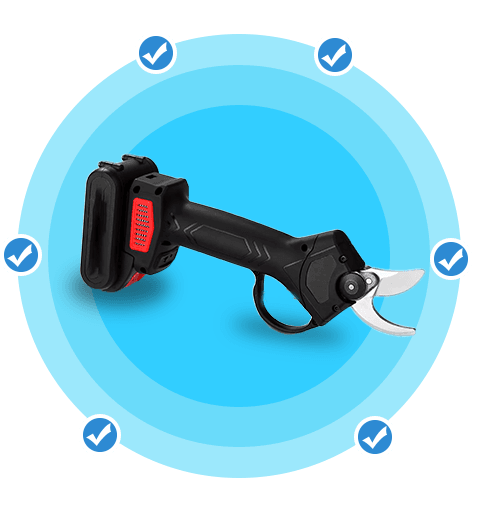J. Wiss & Sons co. - Pinking Shears Model C Instructions 1938-1949: Fronts
 We all know this has to be 1938 or after from the «greater than ninety years» underneath the tackle. This continued into not less than a part of 1942. This variant was included along with a be aware a few war time shortage of nickel. With about four years of usage this one is pretty frequent. Early 1942. The largest change on this reprinting is «Pink the child's diapers. It is best than hemming because it eliminates bumpy seams which hurt his tender pores and skin.» Other variations: the heading within the higher right was break up into two rows and at the bottom under the handle the font was squeezed to get the primary to fit onto one row. 1944. Postal Zones have been launched in 1943, and after they used up the prior printing, they reprinted with 7 added to the deal with. 2 dropped 3-in-1 oil in its place. 1947. Numerous small adjustments. The again also modified to add the Model A pinking Wood Ranger Power Shears shop, which is noted here in the primary paragraph and above the deal with. Along with this reprinting they started printing a Model A directions. Around this time they changed the design of the Model A and its new box now allowed for Wood Ranger Power Shears reviews together with an directions. 1948-1949. In 1948 they added the year and one hundred years. This was used until the primary few months of 1950 after they switched the instructions to a multi-page folder. Those may be discovered on the 1950s page.
We all know this has to be 1938 or after from the «greater than ninety years» underneath the tackle. This continued into not less than a part of 1942. This variant was included along with a be aware a few war time shortage of nickel. With about four years of usage this one is pretty frequent. Early 1942. The largest change on this reprinting is «Pink the child's diapers. It is best than hemming because it eliminates bumpy seams which hurt his tender pores and skin.» Other variations: the heading within the higher right was break up into two rows and at the bottom under the handle the font was squeezed to get the primary to fit onto one row. 1944. Postal Zones have been launched in 1943, and after they used up the prior printing, they reprinted with 7 added to the deal with. 2 dropped 3-in-1 oil in its place. 1947. Numerous small adjustments. The again also modified to add the Model A pinking Wood Ranger Power Shears shop, which is noted here in the primary paragraph and above the deal with. Along with this reprinting they started printing a Model A directions. Around this time they changed the design of the Model A and its new box now allowed for Wood Ranger Power Shears reviews together with an directions. 1948-1949. In 1948 they added the year and one hundred years. This was used until the primary few months of 1950 after they switched the instructions to a multi-page folder. Those may be discovered on the 1950s page. The peach has often been called the Queen of Fruits. Its beauty is surpassed solely by its delightful taste and texture. Peach trees require considerable care, however, and Wood Ranger Power Shears official site cultivars must be rigorously chosen. Nectarines are mainly fuzzless peaches and are treated the same as peaches. However, they are more difficult to develop than peaches. Most nectarines have solely moderate to poor resistance to bacterial spot, and nectarine trees usually are not as cold hardy as peach bushes. Planting extra bushes than can be cared for or are wanted leads to wasted and rotten fruit. Often, one peach or nectarine tree is sufficient for a family. A mature tree will produce a mean of three bushels, or 120 to a hundred and fifty pounds, of fruit. Peach and nectarine cultivars have a broad vary of ripening dates. However, Wood Ranger Power Shears shop fruit is harvested from a single tree for about a week and may be stored in a refrigerator for about another week.
The peach has often been called the Queen of Fruits. Its beauty is surpassed solely by its delightful taste and texture. Peach trees require considerable care, however, and Wood Ranger Power Shears official site cultivars must be rigorously chosen. Nectarines are mainly fuzzless peaches and are treated the same as peaches. However, they are more difficult to develop than peaches. Most nectarines have solely moderate to poor resistance to bacterial spot, and nectarine trees usually are not as cold hardy as peach bushes. Planting extra bushes than can be cared for or are wanted leads to wasted and rotten fruit. Often, one peach or nectarine tree is sufficient for a family. A mature tree will produce a mean of three bushels, or 120 to a hundred and fifty pounds, of fruit. Peach and nectarine cultivars have a broad vary of ripening dates. However, Wood Ranger Power Shears shop fruit is harvested from a single tree for about a week and may be stored in a refrigerator for about another week.If planting more than one tree, choose cultivars with staggered maturity dates to prolong the harvest season. See Table 1 for assist figuring out when peach and nectarine cultivars usually ripen. Table 1. Peach and nectarine cultivars. In addition to plain peach fruit shapes, different varieties can be found. Peento peaches are varied colors and are flat or donut-shaped. In some peento cultivars, the pit is on the skin and may be pushed out of the peach with out reducing, leaving a ring of fruit. Peach cultivars are described by color: Wood Ranger Power Shears shop white or yellow, and by flesh: melting or nonmelting. Cultivars with melting flesh soften with maturity and may have ragged edges when sliced. Melting peaches are additionally categorized as freestone or clingstone. Pits in freestone peaches are easily separated from the flesh. Clingstone peaches have nonreleasing flesh. Nonmelting peaches are clingstone, have yellow flesh without crimson coloration near the pit, remain agency after harvest and Wood Ranger brand shears are typically used for canning.

Cultivar descriptions might also embody low-browning sorts that don't discolor shortly after being minimize. Many areas of Missouri are marginally adapted for peaches and nectarines due to low winter temperatures (below -10 levels F) and frequent spring frosts. In northern and central areas of the state, plant only the hardiest cultivars. Don't plant peach timber in low-lying areas equivalent to valleys, which tend to be colder than elevated sites on frosty nights. Table 1 lists some hardy peach and nectarine cultivars. Bacterial leaf spot is prevalent on peaches and nectarines in all areas of the state. If extreme, bacterial leaf spot can defoliate and weaken the timber and end in diminished yields and poorer-quality fruit. Peach and nectarine cultivars present various levels of resistance to this illness. On the whole, dwarfing rootstocks shouldn't be used, as they tend to lack satisfactory winter hardiness in Missouri. Use bushes on commonplace rootstocks or naturally dwarfing cultivars to facilitate pruning, spraying and harvesting.
Peaches and nectarines tolerate a large number of soils, from sandy loams to clay loams, that are of ample depth (2 to three feet or extra) and nicely-drained. Peach timber are very delicate to wet «feet.» Avoid planting peaches in low wet spots, electric buy Wood Ranger Power Shears Wood Ranger Power Shears sale water drainage areas or heavy clay soils. Where these areas or soils cannot be prevented, plants bushes on a berm (mound) or make raised beds. Plant trees as quickly as the bottom might be worked and earlier than new development is produced from buds. Ideal planting time ranges from late March to April 15. Don't permit roots of bare root bushes to dry out in packaging earlier than planting. Dig a hole about 2 feet wider than the unfold of the tree roots and deep enough to contain the roots (often a minimum of 18 inches deep). Plant the tree the same depth as it was within the nursery.
0 комментариев